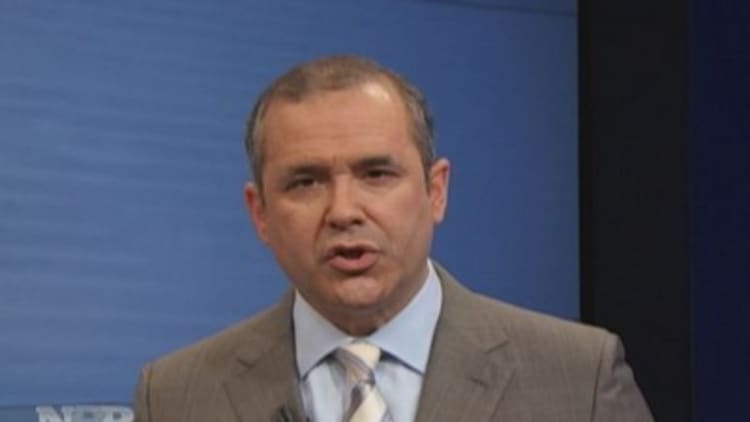Is there a specific rate of return for an investment that should set off alarm bells in your head? You know, where you think this is too good to be true or possibly fraud?
This question came up in a recent interview with an AM radio station in Ohio. It was a reminder that while we here at CNBC tend to be money geeks, the world at large wants straightforward answers.
The problem with this question is that, like most things in investing, the answer is — it depends. Different kinds of investments offer different levels of risk and as a result offer different levels of return. Stocks are considered more risky than bonds. Bonds are seen as more risky than real estate. And so on.
So you have to compare the whatever return you are being offered relative to similar types of investments.
"The tough part about 'too good to be true' is that it is often hard to tell in the moment," said Michael Farr, an investment manager, author of "Restoring Our American Dream: The Best Investment" and a CNBC contributor. "It often requires some time and perspective to realize that something in recent experience was surreal."
Read MoreThe truth about insider trading: ex-Galleon trader
Farr, in an email exchange, recounted the tale of a college professor who had his students record 500 tosses of a coin and calculate the actual percentage of heads and tails. He told them they didn't really have to toss the coin if they didn't want to and could randomly write down heads or tails. Then, the professor offered to review their lists and tell them who actually tossed the coin and who didn't. He says that the real tossers would have several strings of eight heads or tails in a row, and the fakers never do that.

"With risk similar to the benchmark, returns should be in-line with historical averages," said Farr. "There will always be the eight-in-a-rows and outlier periods, but basically – it is NEVER really different this time! If your returns are much better or much worse than your benchmark, there is something wrong."
Take the case of Bernard Madoff. The infamous Ponzi schemer conned crowds without the promise of outsized returns.
Read MoreThe HFT edge—It's not just about speed: NYU professor and former HFT trader
"We know that Madoff's very early, big-time investors got remarkable 'hedge-fund-like' returns of 30 percent for many years," said Diana Henriques, author of "The Wizard of Lies: Bernie Madoff and the Death of Trust". "But ironically, the big international hedge funds he began to attract in the 1990s did not; their returns were remarkable for their consistency, not for their market-beating size."
Could that happen again?
"Everything's relative," Henriques remarked in an email exchange. "In today's low-interest environment, a con artist could offer 'safety, immediate liquidity and 2.75 percent' and a lot of people would think that sounded reasonable...without ever considering that truly safe, truly liquid money market funds are paying far less than that right now."
Back to the radio station's question—is there a rate of return that should set off a fraud alert in your head?
Read MoreEx-Madoff aides ask judge for reprieve
The answer is: No. It's about benchmarks and not a single rate of return number.
So if someone tells you that their stock portfolio will return 60 percent, when stock markets, on average, return about 8 percent over time, be suspicious. And if the return is more like 8 percent? Remember Bernie Madoff.

